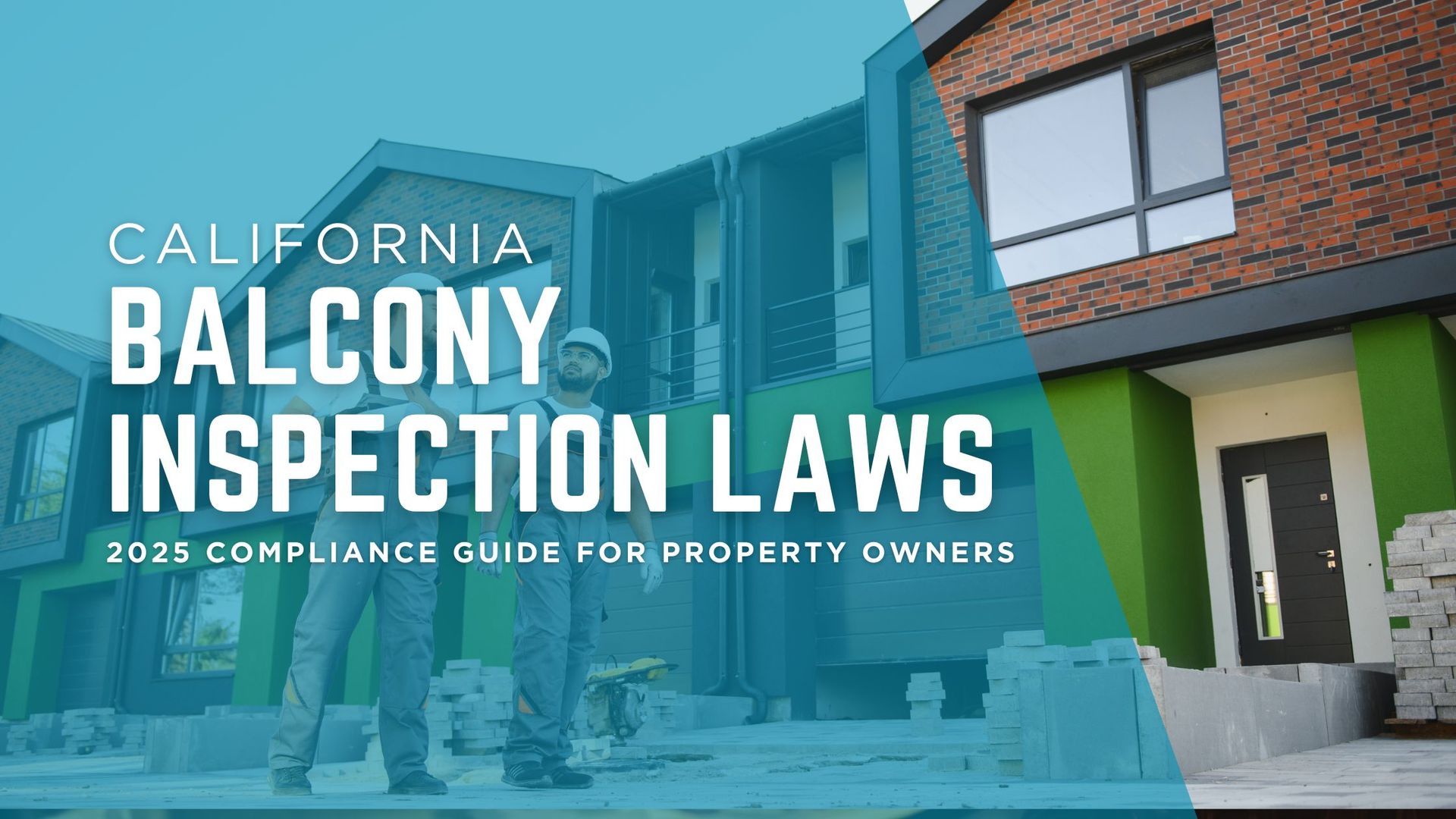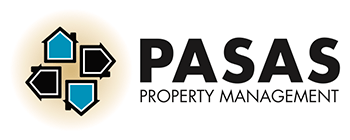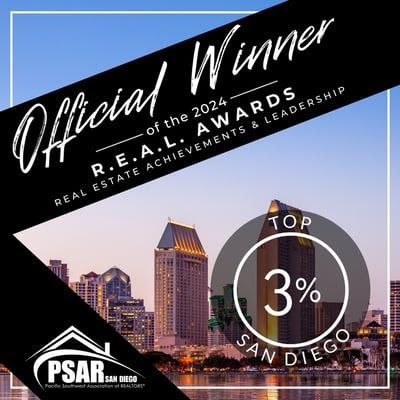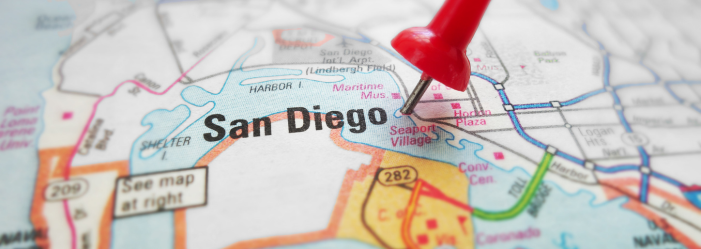California Balcony Inspection Laws: 2025 Compliance Guide for Property Owners

Key Insights
- Deadline Extended: The initial balcony inspection deadline has been extended to January 1, 2026, thanks to AB 2579, giving property owners more time to comply.
- SB 721 Overview: Applies to apartment buildings with three or more dwelling units, requiring inspections of exterior elevated elements (EEE) every six years by licensed professionals.
- SB 326 Overview: Targets condominiums and common interest developments, mandating inspections of elevated structures at least six feet above ground level.
- Owner Responsibility: Property owners and building owners are responsible for maintaining balconies, scheduling inspections, and completing repairs within 120 days of permit approval.
- Non-Compliance Penalties: Failure to comply can result in fines up to $500 per day, property liens, liability exposure, and complications when selling your property.
If you're a California property owner, real estate investor, or HOA board member, understanding the state's balcony inspection law isn't just about compliance, it's also about protecting your investment and ensuring tenant safety. Whether you manage multiple rental properties, own a condo in a homeowners association, or are preparing to sell a multi-unit building, Senate Bill 721 and Senate Bill 326 directly impact you. Understanding these regulations is just one of the many benefits of working with a professional property management company.
In this guide, you'll learn everything you need to know about California's balcony inspection requirements, deadlines, costs, and what to do if your property needs repairs.
What are the New California Balcony Inspection Laws?
California now requires regular safety inspections of balconies, decks, and other exterior elevated elements (EEE) through two key laws: Senate Bill 721 (SB 721) for apartment buildings and Senate Bill 326 (SB 326) for condos and HOAs.
If you own an apartment building with three or more dwelling units, SB 721 applies to you. If you're part of a condo or townhome community, SB 326 is your law. Both require inspections by licensed professionals every six to nine years.
Why California Enacted Balcony Inspection Laws
On June 16, 2015, a balcony in Berkeley collapsed during a birthday party, taking the lives of six people, and injuring seven others.¹ The investigation revealed that wooden support beams had rotted from water damage, a problem that had gone undetected.
This tragedy exposed a widespread issue: many California buildings had balconies with hidden structural problems, particularly in wood or wood-based products exposed to moisture. Without inspection requirements, dangerous conditions often went unnoticed until failure occurred.
The Berkeley collapse became the tipping point for legislative action, leading to the creation of mandatory balcony inspection laws designed to catch deterioration before it becomes deadly.
Understanding Senate Bill 721 (SB 721): Requirements for Apartment Buildings
Senate Bill 721 took effect on January 1, 2019, and applies to apartment buildings with three or more dwelling units.² Good news: the initial inspection deadline was extended to January 1, 2026, thanks to AB 2579 signed in September 2024.³
Key Points to Know:
- What Must Be Inspected: Balconies, decks, porches, stairways, walkways, entry structures, and railings that extend beyond exterior walls and are more than six feet above ground—especially those with wood or wood-based products.
- Who Can Inspect: Licensed architects, licensed structural engineers, or contractors with an "A," "B," or "C-5" license and at least five years of experience.
- Inspection Schedule: Initial inspection by January 1, 2026, then every six years after that in ongoing inspection cycles.
- Reporting: Inspectors must provide detailed inspection reports within 45 days. If they find immediate safety hazards, you must notify your local building department right away.
- Your Responsibility: As the building owner, you're responsible for scheduling inspections, addressing any issues found, and keeping records.
Understanding Senate Bill 326 (SB 326): Requirements for Condos and HOAs
Senate Bill 326 focuses on common interest developments like condos, townhomes, and HOA-managed communities.⁴ While similar in purpose to SB 721, it has some different requirements.
Key Points to Know:
- What Must Be Inspected: Decks, balconies, elevated walkways, stairways, and patios that are at least six feet above ground, plus their waterproofing systems—specifically load-bearing components in common areas or exclusive use common areas.
- Who Can Inspect: Only licensed architects or licensed structural engineers (stricter than SB 721).
- Inspection Schedule: Initial inspections by January 1, 2025, then at least every nine years (or more often if recommended by the inspector).
- HOA Responsibilities: The association must incorporate findings into reserve studies, determine necessary repairs, establish funding plans, and notify homeowners about inspection schedules and results.
- Your Role: If you're an HOA board member, you're responsible for ensuring compliance. If you're a homeowner, you'll receive notifications about assessments or repairs needed.
What Happens During a Balcony Inspection?
Understanding the inspection process helps you prepare and know what to expect when the inspector arrives.
Visual Inspection: The inspector examines all visible surfaces, looking for cracks, warping, rust, loose connections, water staining, and decay on railings, support posts, decking, stairs, and connection points.
Invasive Testing: If visual inspection reveals concerns, the inspector may remove small material sections to check for hidden problems—particularly water damage, rot in wood or wood-based products, or metal corrosion.
Load-Bearing Assessment: The inspector evaluates whether support beams, joists, connections, and fasteners can safely handle their intended loads and meet current building codes.
Water Damage Check: Since moisture is the main cause of balcony failure, inspectors carefully examine waterproofing systems, drainage, and any signs of water penetration or soft spots.
Documentation: After the inspection, you'll receive a detailed report documenting all findings, including photos, severity ratings, and repair recommendations if needed.
Who Can Perform a Balcony Inspection?
Not just anyone can inspect your balcony. California requires specific qualifications to ensure thorough, professional assessments.
For SB 721 (Apartments): Licensed architects, licensed structural engineers, or general contractors with an "A" (General Engineering), "B" (General Building), or "C-5" (Framing and Rough Carpentry) license who have at least five years of relevant experience. They must inspect any structure extending beyond exterior walls with a walking surface over six feet high, constructed with wood or wood-based frames, including balconies, stairways, porches, support railings, walkways, and entry structures.
For SB 326 (Condos/HOAs): Only licensed architects or licensed structural engineers, no contractors allowed, making this requirement stricter than SB 721. They must inspect any structure elevated at least six feet above the ground and associated waterproofing elements, including elevated walkways, decks, balconies, and patios.
Before hiring an inspector, confirm their license is current and in good standing with the California Contractors State License Board (CSLB) or the appropriate professional licensing board. Ask about their experience specifically with exterior elevated elements and whether they carry professional liability insurance.
Qualified inspectors examine all required structures, perform both visual and invasive testing as needed, provide detailed written reports, and classify any deficiencies by severity level.
Compliance Deadlines: Key Dates Property Owners Must Know
Missing these deadlines can result in serious penalties, so mark your calendar now.
SB 721 (Apartments):
- Initial Inspection: January 1, 2026 (extended from January 1, 2025, by AB 2579)
- Ongoing Cycle: Every six years after your initial inspection
SB 326 (Condos/HOAs):
- Initial Inspection: January 1, 2025 (which has now passed)
- Ongoing Cycle: At least every nine years (or sooner if recommended)
Don't wait until the deadline approaches for your apartments. Schedule inspections several months in advance to allow time for any necessary repairs and follow-up inspections. Create a compliance calendar that tracks your inspection dates, report submissions, and any required follow-up actions with your local building department.
What are the Consequences of Noncompliance with California's Balcony Inspection Laws
Ignoring California's balcony inspection law isn't worth the risk. Here's what you're facing if you don't comply:
- Financial Penalties: Daily fines of up to $500 per day per violation can add up quickly. Miss your deadline by just a month, and you could owe $15,000 or more. Local building departments may also place liens on your property until you achieve compliance.
- Legal Liability: If someone is injured on an uninspected balcony, you face significant liability exposure. Without proof of regular inspections, you'll have a much harder time defending yourself in court.
- Insurance Issues: Many insurance providers are now requiring proof of balcony inspections. Noncompliance could result in coverage denial, policy cancellation, or dramatically increased premiums.
- Property Sale Complications: Planning to sell? Buyers and their lenders will ask for inspection records. Missing documentation can kill deals, reduce your property value, or force you to complete rushed (and expensive) inspections before closing.
- Restricted Use: Your local building department can prohibit use of non-compliant balconies, creating tenant complaints, potential rent reductions, and making your property less marketable.
Steps to Take When Repairs Are Needed
If your inspection reveals problems, California law provides clear timelines for addressing them.⁵
Non-Emergency Repairs:
- Apply for a building permit within 120 days of submitting the inspection certification to your local building department
- Complete all corrective work within 120 days of obtaining permit approval
- Schedule a follow-up inspection once work is complete to verify proper repairs
Emergency Repairs: If the inspector identifies immediate safety hazards, you must act fast. It is important to restrict access to dangerous areas immediately, notify tenants and the local building department right away, and begin emergency repairs as soon as possible. Don't wait for the standard permit timeline!
Working with Contractors: Choose contractors experienced with balcony repairs and exterior elevated elements. Ensure they're properly licensed and insured, and verify they pull all necessary permits. Keep detailed records of all repair work, including invoices, photos, and completion certificates.
Let Pasas Property Management Help with Your Compliance Needs
Staying on top of California's balcony inspection law can be complicated, especially when you're managing properties across San Diego County.
At Pasas Property Management, we understand the challenges property owners face with compliance deadlines and regulatory requirements. Our team stays informed on California property laws and can help connect you with the right resources to keep your investment protected.
Ready to simplify your property management? Contact Pasas Property Management today to learn how we support property owners throughout San Diego County. Now offering free rent evaluations!
FAQs about California's New Balcony Inspection Law
What are the requirements for balcony inspection in California?
California requires inspections of exterior elevated elements over six feet high every six years (SB 721 for apartments) or nine years (SB 326 for condos), conducted by licensed professionals who examine structural integrity, load-bearing capacity, and waterproofing systems.
What is the balcony law in California in 2025?
As of 2025, SB 721 requires apartment building owners to complete initial inspections by January 1, 2026 (extended deadline), while SB 326 requires condo and HOA properties to have completed initial inspections by January 1, 2025.
How much does a balcony inspection cost in California?
Inspection costs typically range from $500 to $2,000+ depending on property size, number of exterior elevated elements, accessibility, and whether invasive testing is needed—with larger complexes and those requiring extensive invasive inspection costing more.
Who is responsible for maintaining a balcony?
Property owners and building owners are responsible for maintaining balconies, scheduling required inspections, and completing any necessary repairs, though individual tenants may be responsible for reporting damage and avoiding misuse.
What happens if my balcony fails inspection?
If your balcony fails inspection, you must apply for a building permit within 120 days for non-emergency repairs, complete corrective work within 120 days of permit approval, and obtain a second inspection to verify repairs were properly completed.
Sources
- Berkeleyside. (2015, June 16). Balcony collapse leaves five Irish students dead, many injured. https://www.berkeleyside.org/2015/06/16/balcony-collapse-leaves-five-irish-students-dead-many-injured
- California Legislative Information. (2017). Senate Bill No. 721. https://leginfo.legislature.ca.gov/faces/billNavClient.xhtml?bill_id=201720180SB721
- California Legislative Information. (2024). Assembly Bill No. 2579. https://leginfo.legislature.ca.gov/faces/billNavClient.xhtml?bill_id=202320240AB2579
- LegiScan. (2019). California SB326. https://legiscan.com/CA/text/SB326/id/2050964
- City of South San Francisco. (n.d.). California balcony laws FAQ. https://www.ssf.net/files/assets/public/v/4/economic-amp-community-development/documents/california-balcony-laws-faq.pdf





